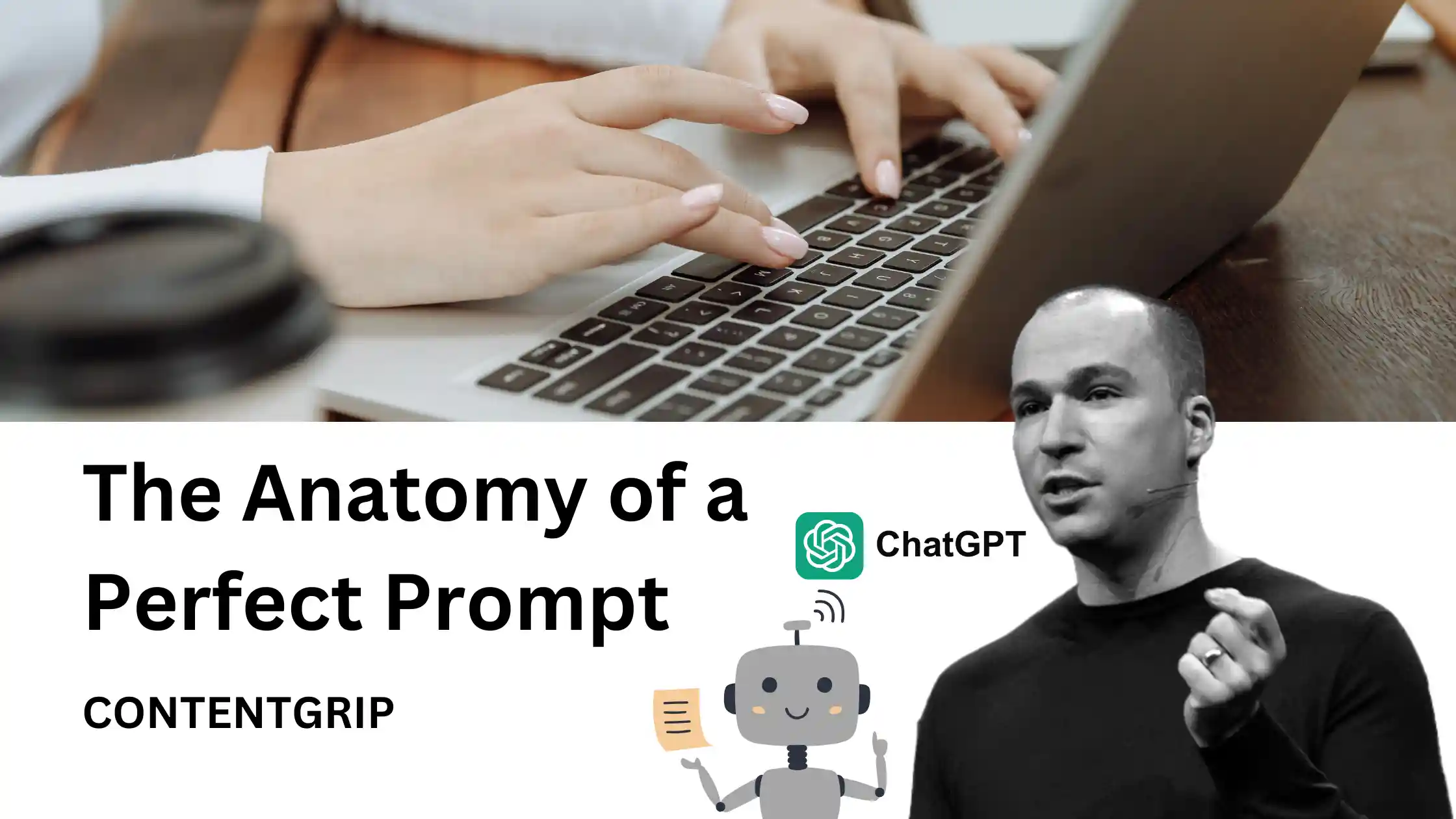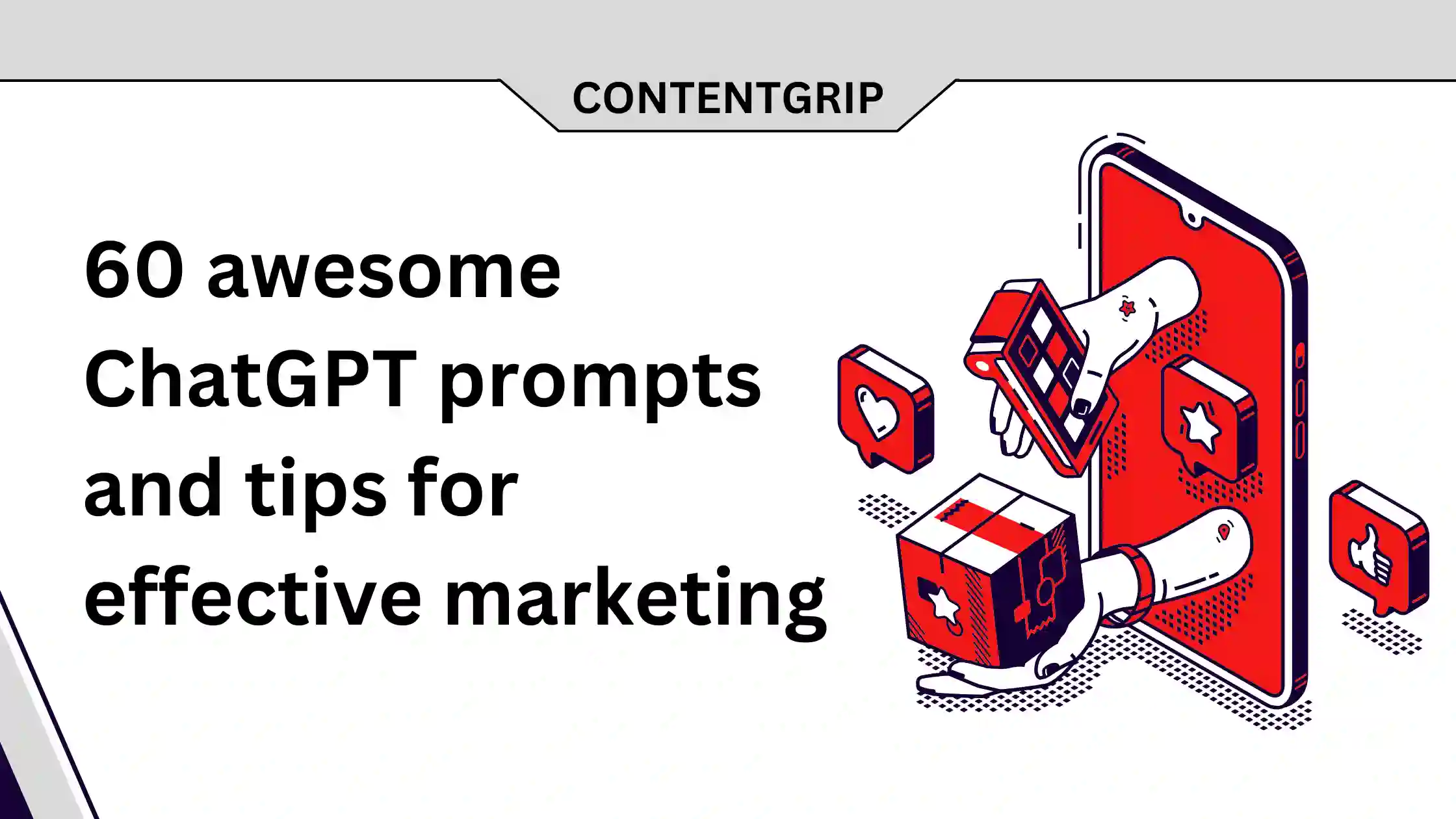Anatomy of a perfect prompt: how marketers and content creators can get better AI-generated content
Writing better AI prompts from Greg Brockman’s method adapted for brand managers and content creators.

AI is changing the way brands create content, from social media posts to ad copy and SEO articles. But not all AI-generated content is useful—oftentimes, it’s generic, off-brand, or just doesn’t fit your goals.
The secret? Writing better prompts.
A well-crafted prompt can help marketers, brand managers, and content creators get AI-generated content that’s high-quality, on-brand, and ready to use. This guide will break down how to structure prompts that deliver clear, engaging, and brand-aligned content.
Short on time?
Quickly access what you are looking for:
- Why do prompts matter for marketers and brands?
- The anatomy of a perfect prompt
- Anatomy of a perfect prompt for marketers
- Prompt templates for different marketing needs
- Fixing common prompt mistakes

Why do prompts matter for marketers and brands?
When using AI tools like ChatGPT, Midjourney, or Claude, the quality of the output depends entirely on how you frame your request. If the prompt is too vague or open-ended, the AI struggles to generate something useful, often producing content that feels generic and unfocused.
But when the prompt is well-structured—clear on the audience, brand voice, and marketing goals—the results become far more relevant and aligned with what you actually need.
Example:
❌ Weak prompt: “Write a blog about AI in marketing.”
✅ Better prompt: “Act as a marketing strategist for an e-commerce brand. Write a 700-word blog post on how AI-powered personalization boosts conversion rates, with real-world examples from major brands.”
The anatomy of a perfect prompt
According to Greg Brockman, co-founder of OpenAI, a perfect prompt consists of several key components to ensure AI-generated content is accurate, relevant, and useful.
A well-structured prompt typically includes:
- Goal – Clearly define what you need from AI. Be specific about the content type (blog post, social media copy, email subject line, etc.).
- Return format – Specify how the response should be structured (e.g., bullet points, paragraph form, tweet thread).
- Warnings & Constraints – Include key instructions like length limits, exclusions, or accuracy checks.
- Context Dump – Provide background details about the audience, brand tone, and objectives to align AI’s response with your needs.
Anatomy of a perfect prompt for marketers
But for marketers and brand managers, structuring a prompt goes beyond just technical accuracy—it needs to reflect brand identity, engage the right audience, and drive conversions.
A well-crafted marketing prompt follows this structure:
- Goal (What is the purpose of the content?)
- Are you creating an ad copy, social media post, blog, email campaign, or script?
- Example: “I need an Instagram caption for a luxury skincare product launch.”
- Audience (Who is it for?)
- Define demographics, pain points, and interests to shape messaging.
- Example: “Target audience: Gen Z skincare enthusiasts looking for clean beauty products.”
- Brand voice (How should it sound?)
- Should it be formal, playful, authoritative, or conversational?
- Example: “Write in a fun, Gen Z-friendly tone, similar to Glossier’s branding.”
- Format & length (What structure works best?)
- Be specific about word count, bullet points, headlines, hashtags, or emojis if needed.
- Example: “Write a short and punchy Twitter thread (5 tweets) about AI trends in content marketing.”
- Key message (What should it include or avoid?)
- Add specific features, benefits, or brand guidelines to keep messaging clear.
- Example: “Highlight that our toothpaste is fluoride-free and made from natural ingredients.”
Let's say you want AI to generate a product launch tweet
❌ Weak prompt: “Write a tweet about our new product.”
✅ Strong prompt using the anatomy of a perfect prompt:
- Goal: "Create a tweet announcing the launch of our new eco-friendly sneaker line."
- Return format: "Write it in a casual, Gen Z-friendly tone under 280 characters. Include an engaging hook and 2 relevant emojis."
- Warnings & Constraints: "Avoid technical jargon, keep it playful, and use an active CTA."
- Context Dump: "Our brand is known for sustainable fashion. Our audience is eco-conscious millennials and Gen Z. This launch is a limited-edition drop with only 500 pairs available."
Prompt templates for different marketing needs
Crafting effective AI prompts can save time and ensure consistency across various marketing channels. Here are ready-to-use templates tailored for ad copy, SEO content, social media, email marketing, and PR—helping you generate high-quality, brand-aligned content with minimal effort.
- For ad copy (Google, Meta, TikTok, LinkedIn Ads)
"Write a 3-line Facebook ad for a new organic coffee brand. Target audience: busy professionals looking for a morning energy boost. Use a friendly and relatable tone, include a CTA."
- For SEO-optimized blog content
"Act as a content strategist. Write a 1,000-word blog on 'How AI is transforming digital marketing,' optimized for SEO. Include an introduction, five key trends, case studies, and a conclusion. Use H2 and H3 subheadings."
- For social media captions
"Write a snappy Instagram caption for a sustainable fashion brand's new denim collection. Keep it under 20 words, include a playful tone, and use 2-3 relevant hashtags."
- For email marketing
"Create a 100-word promotional email for a limited-time discount on our premium skincare line. Use urgency but keep it conversational. CTA: ‘Shop now’ with a direct link."
- For PR and brand storytelling
"Draft a compelling LinkedIn post about our company’s sustainability commitment. Target audience: B2B partners and eco-conscious consumers. Make it engaging and informative, and end with a question to encourage comments."
Fixing common prompt mistakes
Even with a structured approach, AI-generated content can sometimes miss the mark. Here are common prompt mistakes marketers make—and how to refine them for clearer, more effective results.
Even with a perfect prompt, the first output may not be 100% right. Here’s how to refine AI-generated content:
✅ Ask for rewrites: “Make it more concise.” “Make it sound like Apple’s brand voice.”
✅ Request variations: “Give me 3 different versions of this caption.”
✅ Specify engagement tactics: “Make it more relatable with a storytelling approach.”
✅ Fine-tune with follow-ups: “Add a stronger CTA.” “Make it punchier.”
The quality of AI-generated content depends entirely on how well you craft your prompt. For marketers and content creators, this means that with the right structure, AI can produce content that feels more on-brand, engaging, and tailored to specific goals.
The key is to treat AI as a tool that improves with clear instructions and refinements. Start experimenting with these techniques and see what works best for your brand.
This post is created by ContentGrow, providing scalable and tailored content creation services for B2B brands and publishers worldwide. Book a discovery call to learn more.




